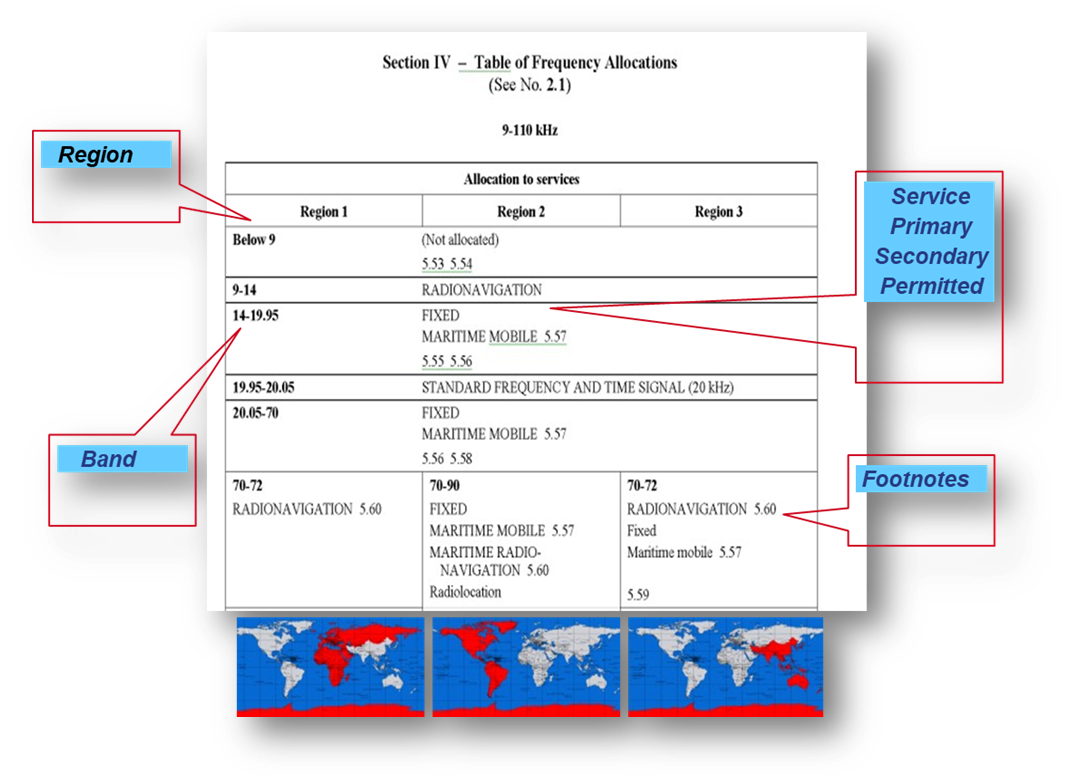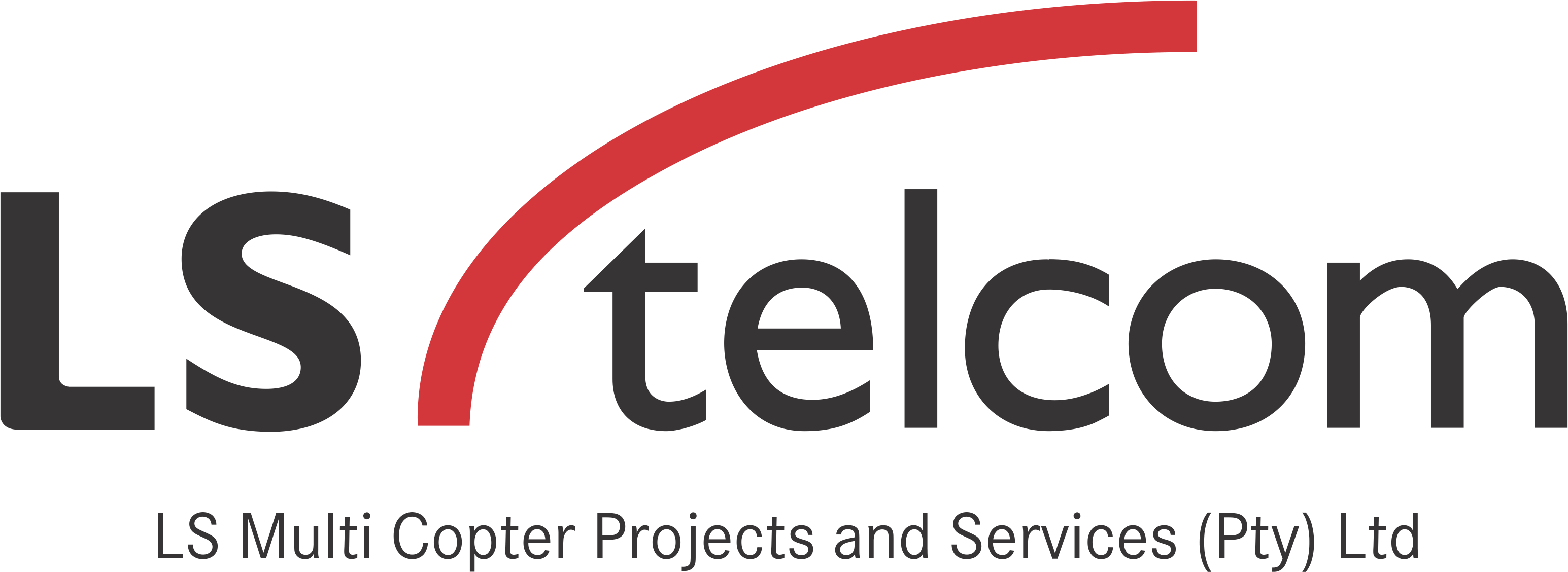SPECTRUM MANAGEMENT
Training
Please find below an overview of all available training courses with regards to Spectrum Management and Monitoring:
Please do not hesitate to contact us to discuss your individual training needs.
Get the details about the content and outcomes of our training courses by clicking at the training title
Training Focus
The spectrum management function is a task normally undertaken by the national communication regulator of a country. This function includes amongst others the licensing of spectrum, spectrum allocations, development of channel plans and the frequency coordination within the country and with its neighbouring countries. This three-day training program covers various aspects of spectrum management. It includes information on the history, important international organisations that play important roles all around the world including the ITU. There will be an overview on the spectrum usage and applications throughout the available frequency spectrum. The latest hot topics around the world related to spectrum management will be discussed. The course also include information on frequency occupation and spectrum efficiency of certain technologies.
Course Outcomes
▪ The course will empower the participants to visualise the spectrum usage and application over the complete frequency spectrum.
▪ After the course is completed the participants will have a much clearer understanding of the regulatory function and the difficulty of the engineering and administrative tasks that the regulator need to undertake daily.
▪ The course will also clearly indicate all the role players that need to be consulted during the different regulatory tasks and functions.
Prerequisites
No formal prerequisites are required but keen interest in the functions of the regulator is required. People with an engineering background will appreciate certain technology aspect more while people with other backgrounds might appreciate the negotiation skills that are required more.
Audience
The target audience include spectrum managers, regulators and policy makers. It includes information for non-engineering persons and people with a key interest in spectrum management.
| Day | Course Contents |
|---|---|
| Day 1 | Introduction to Spectrum Management
|
| Day 2 | ITU and International Spectrum Management Organisations
|
| Day 3 | Spectrum Efficiency
|

Training Focus
This course is based on the latest ITU-R recommendations, reports and handbooks and provides an introduction into the most common spectrum monitoring and measurements techniques. It is also presented theoretical background and practical examples that help in understanding specifics of administrative spectrum monitoring. The training concludes with number of practical examples.
Course Outcomes
After the training, the participants will be able to understand standards, the procedures and methods of the most common monitoring measurements, to distinguish between different measurements technologies, to respect technical limitations of measurement equipment, to present results to different user groups on a simple way.
Prerequisites
Basic understanding of radio communication is advisable.
Audience
Delegates with a basic understanding of radio communication and electromagnetic wave propagation.
Delegates with are interested in spectrum monitoring measurement and techniques.
Delegates who are employed in regulatory authorities that are supposed to execute spectrum monitoring measurements, reporting and providing early warnings to policy makers.
| Day | Course Contents |
|---|---|
| Day 1 |
|
| Day | Course Contents |
|---|---|
| Day 1 | Introduction to Spectrum Management
|
| Day 2 | ITU and International Spectrum Management Organisations
|
| Day 3 | Introduction Radio Network Planning
|
| Day 4 | Cell Structure Planning
|
| Day 5 | Spectrum Monitoring
|
Training Focus
This training course offers the participants with a high level understanding of the main topics of Spectrum Management, Radio Network Planning and Spectrum Monitoring over a 5-day period.
The high level breakdown of the topics that will be covered during the course is as follows:
| Day | Course Contents |
|---|---|
| Day 1 and Day 2 | Spectrum Management |
| Day 3 and Day 4 | Radio Network Planning |
| Day 5 | Spectrum Monitoring |
Course Structure
The detailed breakdown of the topics that will be covered in this training course is as follows:
| Day | Course Contents |
|---|---|
| Day 1 | Introduction to Spectrum Management
|
| Day 2 | ITU and International Spectrum Management Organisations
|
| Day 3 | Introduction Radio Network Planning
|
| Day 4 | Cell Structure Planning
|
| Day 5 | Spectrum Monitoring
|
Training Focus
The training course offers the participants with a high level understanding of the main topics
of Spectrum Management, Radio Network Planning and Foundation of Telecommunication
Regulations. The course is offered over a 5-day period.
The high level breakdown of the topics that will be covered during the course is as follows:
| Day | Course Contents |
|---|---|
| Day 1 and Day 2 | Spectrum Management |
| Day 3 and Day 4 | Radio Network Planning |
| Day 5 | Foundation of Telecoms Regulation |
| Day | Course Contents |
|---|---|
| Day 1 | Introduction to Spectrum Management
|
| Day 2 | ITU and International Spectrum Management Organisations
|
| Day 3 | Introduction Radio Network Planning
|
| Day 4 | Cell Structure Planning
|
| Day 5 | Foundation of Telecommunication Regulations
|
Training Focus
This two-day course offers classroom training to delegates who are interested in both expanding and/or supplementing the fundamental techniques of spectrum analysis and use of a spectrum analyser.
Course Outcomes
▪ Delegates will have a solid understanding of the fundamentals of spectrum analysis, e.g. super-heterodyne receiver as the basis of understanding, filters, mixers, detection methods, etc.
▪ Delegates will also be able to identify with all terminologies used within the ambit of spectrum analysis, and
▪ Delegates will gain confidence for the course in doing measurements
Prerequisites
You should have the following entry level requirements before you can enrol for this module:
▪ National Diploma (T3/S4) or higher – preferably with a specialty in the field of Electronic Communication Systems (Radio Engineering/Electronic Measurements)
Audience
▪ Delegates with a basic understanding in the use of a spectrum analyser.
▪ Delegates from an Electronic Communications Systems background (e.g. broadcast/military/telecommunications)
| Day | Coruse Contents |
|---|---|
| Day 1 |
|
| Day 2 |
|
